Share this article

The best compliance management software for 2025
Accelerating security solutions for small businesses Tagore offers strategic services to small businesses. | A partnership that can scale Tagore prioritized finding a managed compliance partner with an established product, dedicated support team, and rapid release rate. | Standing out from competitors Tagore's partnership with Vanta enhances its strategic focus and deepens client value, creating differentiation in a competitive market. |
In 2025, compliance work shouldn’t mean chasing screenshots, living in spreadsheets, or chaotic fire drills to get compliant. If you’re still tallying up hours upon hours of compliance work, it’s time to find a compliance management software that helps you automate compliance, manage risk, and prove trust.
Not sure where to start? Read on for an assessment of the top five compliance management software solutions on the market—including each platform’s key features, strengths, and weaknesses.
The state of the compliance software in 2025
As technology and regulation continue to collide, the compliance landscape is shifting fast. In a way, it’s never been a harder—or easier—time to meet compliance requirements.
On one hand, the challenges of compliance are piling up:
- AI is both accelerating tech cycles and reshaping the cybersecurity landscape
- Our digital ecosystem is irrevocably interwoven—meaning the security of one vendor can have ripple-effect impacts across their networks
- Regulatory expectations are rising, with 85% of organizations saying compliance requirements have become more complex over the past three years
As a result, traditional point-in-time compliance snapshots born out of “audit season” are no longer enough to prove security. These days, companies need to show “always on” security to build and maintain trust with their customers, partners, and investors.
This can prove tricky for startups trying to earn their first SOC 2 through screenshots and spreadsheets, as well as for enterprises navigating multiple compliance frameworks and changing regulations.
Fortunately, we have more tools today to lighten the burden of compliance than we did even a few years ago. Companies looking for a compliance solution will find everything from simple compliance automation tools to platforms that consolidate compliance automation, risk management, continuous monitoring, and AI functionality in one place.
If you’re in the market for compliance management software, there’s likely a tool out there that can help you get compliant faster, reduce manual overhead, and prove security to prospects and investors. The hard part is figuring out which tool is best for you.
How we picked these tools
A compliance management tool should centralize compliance work, automate processes, and keep you continuously ready—without derailing the roadmap. We used the following criteria to assess existing solutions on the market and help you find the right fit platform for your needs.
Disclaimer: To help you find the best compliance management software, we’ve researched and ranked a selection of leading platforms. While we may be biased about Vanta being the top option, we aim to provide a comprehensive view so you can choose the right fit for your organization.
Best compliance management software
#1 Vanta
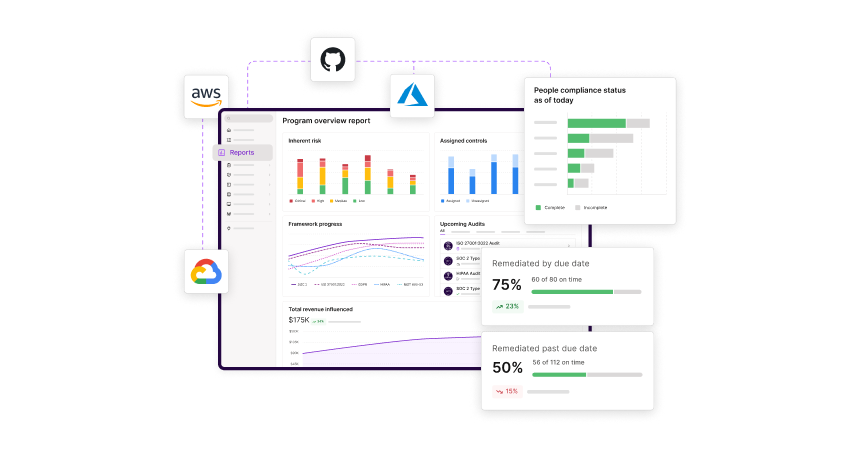
Vanta is the leading trust management and compliance automation platform. With Vanta, companies can automate and continuously monitor their compliance posture in real-time in a centralized, easy-to-use platform.
Vanta maps controls and evidence across multiple frameworks, automates evidence collection through its broad integration ecosystem, and provides actionable insights and workflows that streamline audits, reduce manual effort, and give teams confidence in their security posture.
Vanta’s AI Agent takes automation further by guiding you through key workflows and taking action on your behalf, all while keeping you firmly in control.
Vanta is ideal for: Startups that need to get compliant and prove trust fast to unlock bigger deals; enterprises that need to operationalize trust, reduce manual overhead, and scale their compliance and risk program.
Features
- Automated and centralized evidence collection
- Cross-mapped controls across more than 35 frameworks
- Continuous controls monitoring with more than 1,200 automated tests
- More than [integrations_count] integrations across cloud, identity, endpoint, and ticketing
- Pre-built policies and document templates
- Trust Center to share real-time control status with customers
- In-app audit experience and partner network
- Foundational security capabilities, like risk management and personnel and access management
- Vanta AI for guided workflows (e.g., policy builder, control remediation) that keep you in the loop
{{cta_simple29="/cta-blocks"}}
#2 Drata

Drata is a GRC platform that automates compliance, manages risk, and accelerates security reviews so businesses can grow faster. Drata emphasizes that its AI-powered automation, deep integrations, and unified platform can be used to replace manual audits and reactive processes with real-time trust.
Drata is ideal for: Teams willing to take on more manual work to offset tool costs
Features
- Continuous monitoring and automated evidence capture
- Prebuilt control library for common frameworks
- Risk register and issue management
- Trust portal for sharing posture externally
- Auditor-friendly reporting and exports
- Policy templates and employee compliance tracking
#3 Secureframe
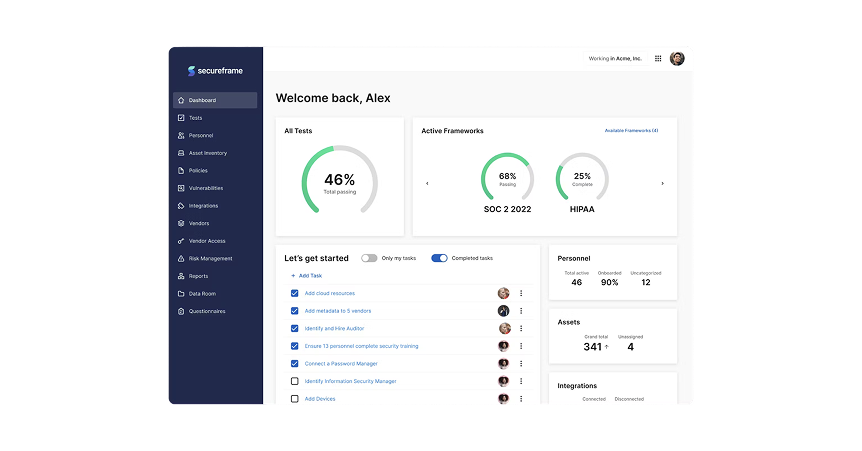
Secureframe is a compliance platform that helps companies get compliance, mitigate risk, and use security as a differentiator. Secureframe provides automated evidence collection, continuous monitoring, and risk management for an end-to-end compliance solution. Secureframe supports multiple frameworks, including SOC 2, ISO 27001, HIPAA, and PCI DSS.
Secureframe is ideal for: Growth-stage companies balancing internal compliance, vendor oversight, and multi-framework needs
Features
- Automated evidence collection via integrations
- Continuous monitoring with alerting
- Policy library with versioning and attestations
- Personnel training and access tracking
- Auditor collaboration and readiness checklists
- Multi-framework control mapping
#4 Delve
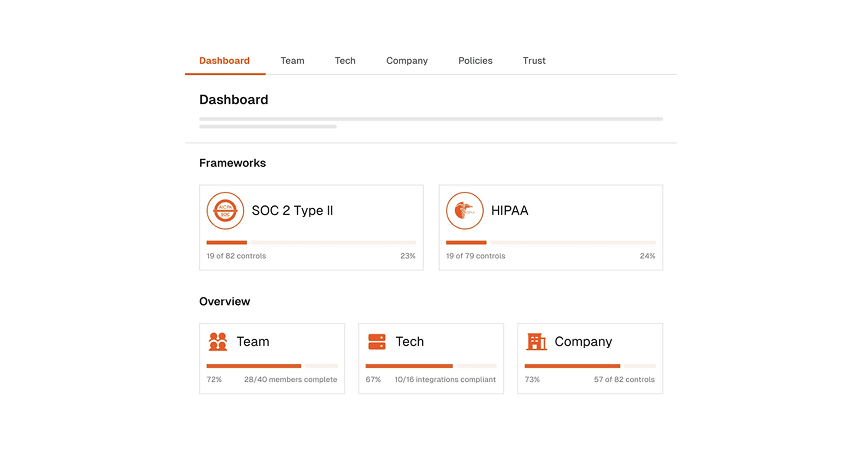
Delve is a compliance automation platform that says its AI agents help companies eliminate compliance busywork, build security that lasts, and close deals faster. Delve emphasizes pragmatic compliance for resource-constrained teams, offering control mapping, evidence collection, and simple reporting in an approachable package.
Delve is ideal for: Small startups and lean teams seeking a manageable first system to check the box on first-time compliance
Features
- Control library with mapping to common frameworks
- Evidence repository with ownership and deadlines
- Integrations for core cloud and identity systems
- Risk register and issue tracking
- Lightweight dashboards for posture reporting
- Policy templates and attestations
#5 OneTrust

OneTrust offers a broad governance platform spanning privacy, risk, and compliance. It suits organizations consolidating multiple programs into one suite, with robust policy, assessment, and reporting capabilities across complex environments and teams.
OneTrust is ideal for: Enterprises consolidating privacy, risk, and compliance into one configurable suite
Features
- Assessment workflows and configurable questionnaires
- Policy lifecycle management and attestations
- Vendor risk and data mapping capabilities
- Flexible reporting and dashboards
- Role-based access and approval flows
- Integrations with enterprise systems
How to choose compliance management software
We recommend doing your due diligence before diving headfirst into a new compliance management solution. If you don’t know where to start, consider the following steps to finding the right tool for you.
- Identify your compliance pain points: Audit your current compliance processes and procedures to identify the specific pain points you want a compliance management tool to solve, such as reducing manual evidence collection or reducing duplicate work across frameworks. Prioritize your needs: Do you need the fastest path to compliance? A highly trusted vendor that prospects already trust?
- Pressure-test platforms: In a live trial, test each platform by connecting your integrations to validate things like automated evidence collection, continuous monitoring, and other criteria important to your team. Insist on a real trial, not a sandbox or slides.
- Consider current and future needs: In addition to your immediate needs, investigate whether the platform has capabilities you might want as your company scales, such as offerings around vendor risk, user access management, penetration testing, and so on.
- Confirm auditor workflows and reporting. Make sure the platform works with reputable auditors so you’ll have a seamless in-app audit experience.
- Model current and future costs: Make sure you understand pricing today and as your business grows. How does pricing change as you add features or headcount?
Ready to go with the trusted leader in security and compliance?
With more experience and proven success than any other platform, our deep expertise, relentless innovation, and unmatched customer trust make us the number one choice for fast-growing companies. Sign up for a demo if you’re interested in joining the more than 12,000 businesses that trust Vanta.
{{cta_simple29="/cta-blocks"}}
FAQs
What is compliance management software?
Compliance management software centralizes controls, automates evidence collection, and monitors compliance posture across frameworks. By mapping requirements to tests and owners, it streamlines audits, reduces manual effort, and provides trustworthy reports for executives, customers, and regulators.
How does continuous control monitoring help?
Continuous monitoring runs automated tests on a schedule, catching drift early and triggering remediation before audits. It replaces point-in-time checks with ongoing assurance so you address issues quickly, reduce findings, and sustain compliance throughout the year.
Which integrations matter most?
Prioritize systems that generate required evidence: cloud infrastructure, identity providers, endpoint security, version control systems, ticketing systems, and HRIS. Deeper connectors mean better automation, fewer screenshots, and cleaner traceability, which shortens audits and reduces compliance overhead across teams.
Can one tool support multiple frameworks?
Yes, leading platforms map controls across multiple frameworks, reusing tests and evidence. That reduces duplication, accelerates new attestations, and keeps your program consistent as you expand into customer-driven or regulatory standards over time.
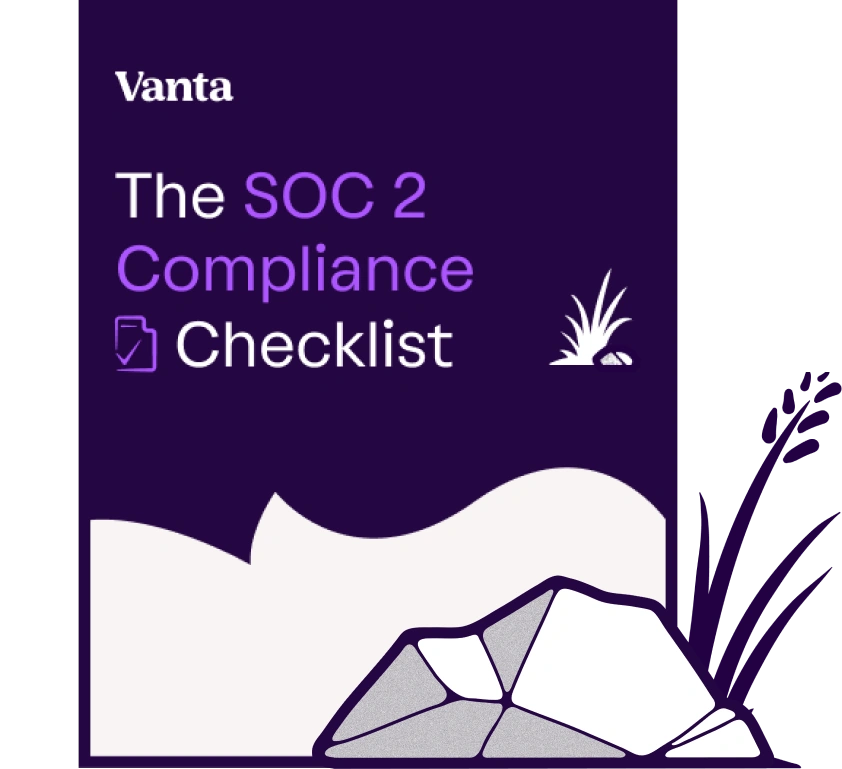




FEATURED VANTA RESOURCE
The ultimate guide to scaling your compliance program
Learn how to scale, manage, and optimize alongside your business goals.














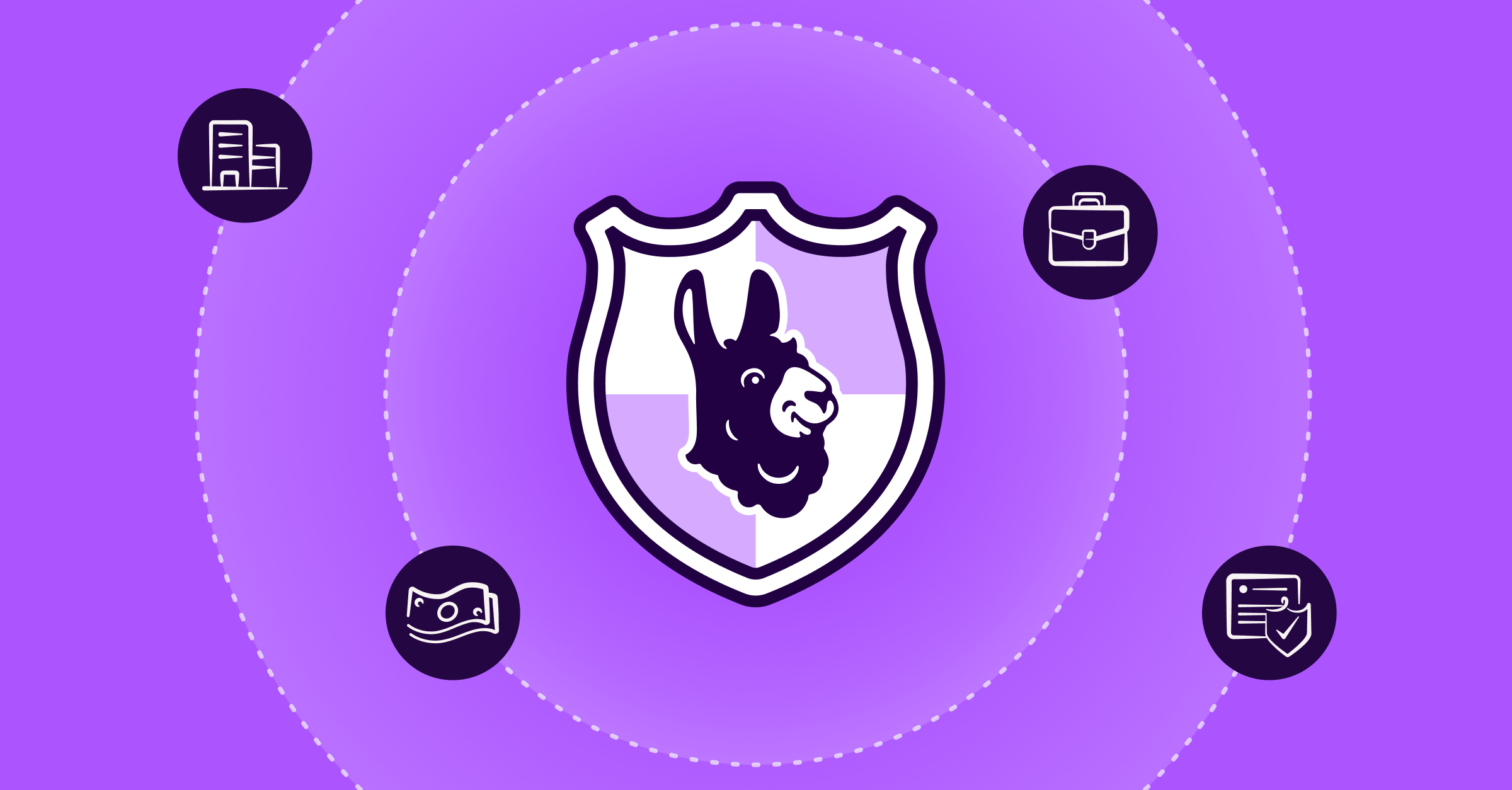
.webp)

.svg)
.svg)
.png)
.png)
.png)